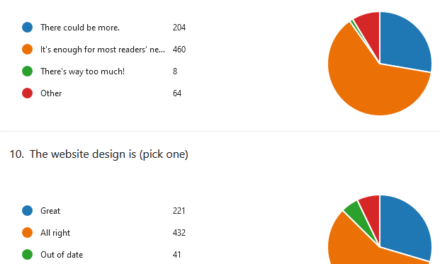
Managing Editor Lisa Ampleman: At The Cincinnati Review, we like to be as open as possible with submitters about our reading processes—we’re writers too, and we know what it’s like to send work off into the digital ether, wondering who might pick it up at the other end. We’ve written in the past about our staff structure and reading process; though the timing of our submission periods for the print magazine has changed since, much remains the same. To reiterate, in an updated way:
Our staff consists now of three permanent but part-time editors, three graduate-student editorial positions during the academic year, a summer student editor for a short six-week fellowship, and as many volunteers as we can get (about six to ten, depending on the year). We also have the four genre editors who make the final call on what’s accepted for the print journal.
That small staff produces the physical magazine and the miCRo online series, and reads through every single submission, from beginning to end (we don’t do the cliched “read only the first sentence and then put it down”). For the print magazine, usually a volunteer will read a piece first, and then an editor reads behind them, before the genre team gets the submission to make a decision—so almost everything gets at least two sets of eyes on it, if not more. That takes time.
Our process for the miCRo series varies a bit from that approach: We want it to go quickly, in the spirit of the “flash” pieces that we publish in it. Our graduate students are the primary curators for the series—with Bess Winter and Lisa Ampleman pitching in this year because we have two student editors instead of our usual three. (The genre editors for the print mag aren’t directly involved with miCRo.)
Also, although the editors pass particular pieces around sometimes to get others’ opinions, submissions often get just a single read, to achieve that quick process. We try to have the submission category for miCRo open as often as possible too, so you can resubmit if you get a rejection. When we have a big backlog, we close that category temporarily, though, as we did at the end of November.
And just a reminder to check our submission guidelines page and the announcements at the top of our Submission Manager page: despite the category reading “miCRo – READ GUIDELINES FIRST,” we often get submissions clearly meant for the print magazine.
If you have something short, though, 500 words max for prose or hybrid pieces, 32 lines max for poetry, send it our way! You can send up to three pieces in each submission, and we do try to get back to you quickly, often within three months. We’re reading down that backlog right now, but we expect the miCRo category to reopen in our Submission Manager on February 1.
As far as what we’re looking for, check out these posts from former editors:
- Maggie Su on myths about short fiction
- Madeleine Wattenberg on what makes a short poem great
- Molly Reid on what caught editors’ eyes as they chose pieces for the series.
You can always check the masthead for our current miCRo editors (those listed as assistant or associate editors)—or better yet, read the latest installments in the series! Because the editorial roster rotates every academic year, it keeps the series innovative and vibrant.
In this series as with the print journal, we aim to make sure the people we’re publishing match the diversity of our literary community, so if you’re a writer from a systemically marginalized group (including but not limited to writers of color, members of the LGBTQIA+ community, neurodivergent writers, disabled writers, working-class and low-income writers, and age 60+ writers), please keep us in mind when you’re sending work out.
And for a little more motivation: two years ago, we started paying every miCRo contributor $25, and we continue giving them a free digital issue of the magazine of their choice! Mark your calendars for February 1 if you’d like to send us your short things . . .










